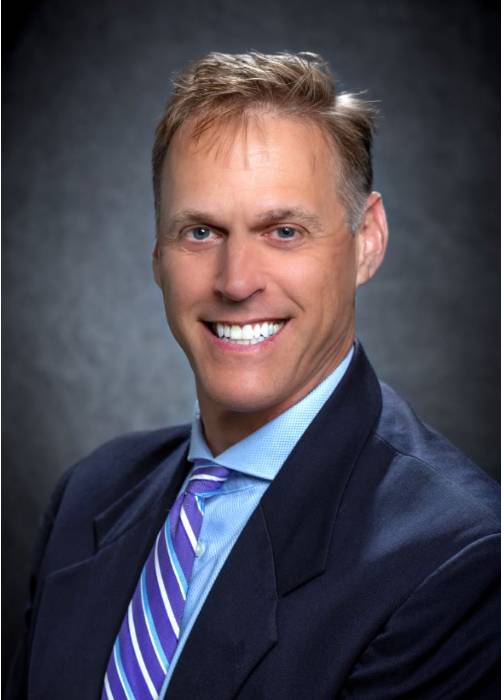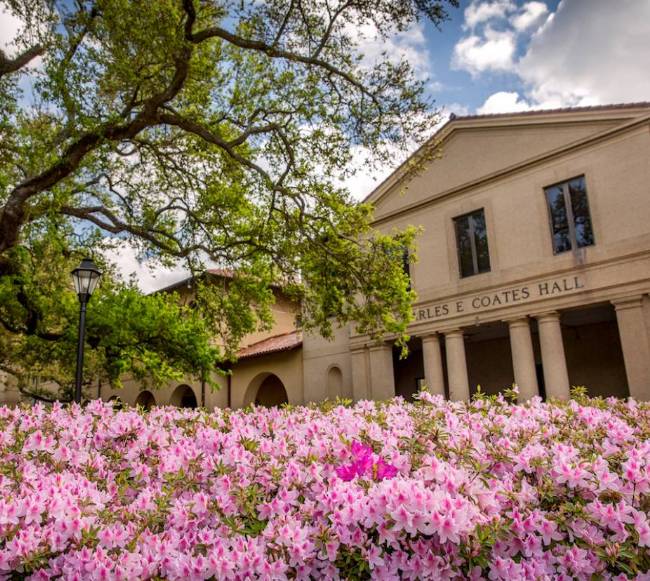LSU Engineering Professor Recalls Inception of Contraflow Design Prior to Katrina
August 13, 2025
These days, seeing cars heading in one direction on the interstate can only mean one thing—a hurricane is approaching. Contraflow, a method of evacuation thought up by LSU Civil & Environmental Engineering Professor Brian Wolshon, is now used all over the world to save lives and was an integral part of getting people out of New Orleans before Katrina made a name for herself.
“I feel like my entire professional career is the result of Katrina,” Wolshon said. “The reason I’ve had success as a professor is from Katrina. The reason why I’m on TV across the world is Katrina. I’ve written books and I consult, all based on Katrina.”
Wolshon, a native of Detroit, Mich., began teaching at LSU in 1997, one year prior to Hurricane Georges.

Brian Wolshon
“I’d never seen an evacuation or a hurricane before, nothing,” he said.
Wolshon, whose background is in roadway design and safety and managing traffic, was dumbfounded when he saw the traffic jams coming out of New Orleans to miss Hurricane Georges, a Category 2 storm that made landfall near Biloxi on Sept. 28, 1998.
“It was the first time they used a real mass evacuation or called for the mass evacuation of New Orleans since 1969,” Wolshon said.
Wolshon knew there had to be a better way for everyone to evacuate, but it wasn’t until Hurricane Floyd loomed over the Atlantic in September 1999 that Wolshon saw just how desperate the South was for a hurricane evacuation plan. Floyd was originally poised to hit Florida before turning to Georgia, then South Carolina, and finally making landfall in North Carolina as a Category 2 hurricane.
“It caused an evacuation of Floridians going north to Georgia, then all the Georgians had to evacuate to South Carolina,” Wolshon said. “It was a mess. It was the biggest traffic jam anyone had ever seen. You have this storm that could kill people, and nobody can move.”
Wolshon knew the states should be working together and soon realized no one had a playbook for hurricane evacuations.
“Not Florida, not Louisiana, no one,” he said.
In 2000, Wolshon and three of his LSU CEE students began researching traffic-related evacuations. One student began reaching out to each hurricane-prone state in the South to see what information they had. Another student used a traffic simulation program to research evacuation routes.
“Contraflow sounded crazy to my students at first,” Wolshon said. “They thought people would get killed doing lane reversals. I said, ‘Let’s just simulate it and see what it looks like. If you think about it, turning all the lanes of the freeway into one direction is going to make a ton of traffic move.’”
Soon after he started his research, Wolshon received a phone call from the United States Department of Transportation wanting to discuss contraflow with him. Prior to calling Wolshon, the office had reached out to 14 states who all recommended speaking to Wolshon.
“The craziest thing is that everyone remembered me and my students and knew we had been collecting all this information,” he said.
Wolshon’s student who was writing her thesis on contraflow was told it was now a matter of vital national significance. The Department of Transportation asked her to condense her thesis into a 10-page report, print 10,000 copies of it, and ship it to Washington, D.C. The DOT then sent copies to police departments, emergency management, Department of Transportation and Development, Department of Public Works, Federal Emergency Management Agency and anyone involved in evacuations, according to Wolshon.
Fast forward to Hurricane Ivan in 2004, Governor Kathleen Blanco’s office reached out to Wolshon asking him to come to the Governor’s Mansion and tell them what he knew about evacuations. Ivan was the first time contraflow was implemented in Louisiana for a hurricane evacuation.
Then came August 29, 2005. Hurricane Katrina, a Category 3 storm that was originally predicted to be a Category 5 with a direct hit on New Orleans, veered right and swiped the Crescent City causing its levees to break, which left most of the city flooded. Gov. Blanco’s office called Wolshon once again.
“'We have a problem,' they said,” Wolshon said. “'We have a flooded city. You’re the transportation guy. If we give you some data, can you tell us where the traffic left the city, how fast, and how many people might still be trapped in the city, and where they might be?' So, we start off with 1.3 million residents, then count 800,000 cars, and you figure 1.6 people per car. That means you might have 10,000-30,000 people in the city.”
This estimate gave city and state officials an idea of just how catastrophic the storm was and how many lives needed to be saved.
“City officials and residents knew New Orleans was below sea level,” Wolshon said. “No one thought, realistically, that the levees would breach and flood the city.”
Today, Wolshon travels the globe talking about contraflow for emergency situations and spent time at a conference in China this past summer to discuss the topic. He has also given TV interviews on CNN and Fox News, and has written four books.
“ Everyone thinks it won’t be that bad where they are. If there’s a legacy of Katrina, it’s that what we learned in Katrina never stopped with Katrina. ”
“What I tell people at all these conferences around the world is that this is going to happen again and again and again. The problem is no one plans in advance. Everyone thinks it won’t be that bad where they are. If there’s a legacy of Katrina, it’s that what we learned in Katrina never stopped with Katrina. We began looking at not just moving cars, but people who couldn’t move because they didn’t have a car. It branched off into even more research. Now we’re talking about mass movements like war refugees and wildfires.”
Wolshon says another thing he learned in Katrina is that sometimes you don’t need to be the smartest; you just need to be the first to get there.
“I’ve studied these scenarios all over the world, and I can say that, today, Louisiana’s evacuation plan is hands down the best plan I’ve ever seen anywhere on Earth,” Wolshon said. “People need to know that because we don’t get enough credit. When I roll into meetings with important people and I have my LSU tie on and my slides that say LSU on them, people know who we are.”
Turning Tragedy into Impact
Explore LSU’s role in response, recovery, resilience, and research following Hurricane Katrina.


